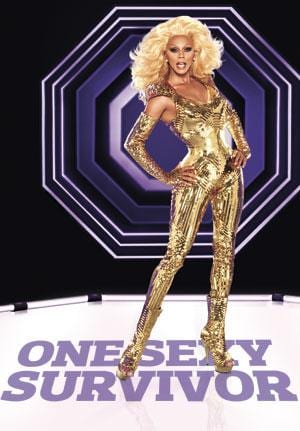It’s bitchy, bold and brash, and it’s coming to a gay network near you. Yes, RuPaul’s Drag Race has landed at OUTtv, and the fierce supermodel is set to conquer Canada all over again as she shepherds in a whole new generation of drag queens.
If you haven’t seen it yet, Drag Race is kind of like Tyra Banks’ America’s Next Top Model on crack. Whether in or out of drag, RuPaul’s contestants make Tyra’s gals look like finishing-school girls; no eyes are left unscratched as they strut, pout and rip each other to shreds vying for big money and a shot at a modelling career.
“That bitchy element is there because it’s so competitive,” says RuPaul. “I mean, they’re going for $100,000 here. So they need to really work it.”
The series has been a steady ratings winner for the MTV and MuchMore networks and is now making the jump to OUTtv for its fourth season. Like Banks’ show, Drag Race highlights both the professional journeys of its contestants and the personal backstage drama that makes it such a guilty pleasure.
But RuPaul adds an extra twist to the proceedings, requiring her girls to design and construct outfits, compete in Survivor-style challenges and talk about their own personal journeys as gay men who perform in drag. The host also appears regularly out of drag, offering the advice and coaching he never received when first starting out 30-plus years ago.
“The biggest story here for me is really legacy,” RuPaul says. “It’s me sharing my own legacy about how I’ve been able to unleash the fierceness unto the world. We’ve now had 50 kids who have come through our show and basically taken over the drag game.
“They’re working all around the world and making money. That’s the thing I’m most proud of, creating a portal for these kids to create their own stories.”
RuPaul offers tips on everything from makeup to personality representation but is careful to allow her protégés the room to build their own personas, rather than just copy their mentor’s.
“In terms of art, you need to have a template,” she says. “When I started out, I based mine on stars like David Bowie, Cher and Diana Ross. As you move forward on this path, you collect parts of your personality that become more revealed. When you reach your destination, you reach something real.”
Finding the real you by slapping on some makeup and learning to walk in heels might not be the journey for everyone, but it’s certainly worked for our favourite glamazon. With six albums, a few films and countless TV appearances under her belt, RuPaul is clearly a survivor in the ruthless game of celebrity.
Sure there have been hard times: 2004’s criminally under-appreciated album Red Hot featured some of the singer’s best vocal performances but was hampered by an eight-year dearth of queer media coverage during the Bush administration. RuPaul persevered in the dance club scene, producing another album and biding her time until friendly climes returned.
“They are always little windows of openness,” she says. “We experienced that in the ’70s with free love, then in the Clinton time, which is when I got famous, and then again in 2008 just before Obama got into office.
“But it’s the same old dance, really. The human ego is so at home with fear and turmoil. Sometimes I think we really don’t want to be happy, actually.”
Facing up to feelings of unworthiness and fear has remained at the forefront of RuPaul’s work, not only with herself but with the young queens she mentors on her show. Sometimes it’s an uphill battle.
“I know I tripped early on over certain ideas about myself,” she says. “I needed to please other people, and I didn’t like the pain of being ostracized. But if I’m holding on to an old useless idea, then I’m not able to make space for something new. So I gave up believing that I’m a victim of this world and so different from everybody else.
“It’s so embarrassing to admit, but I would create situations that would support the feeling that I was less than everyone else. The challenge is, are you willing to let go of that story? If you do, when you do, something new and amazing will open up.”

 Why you can trust Xtra
Why you can trust Xtra


